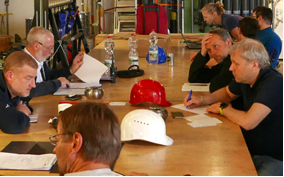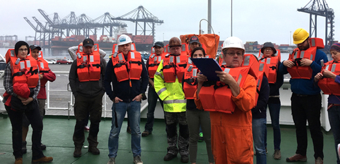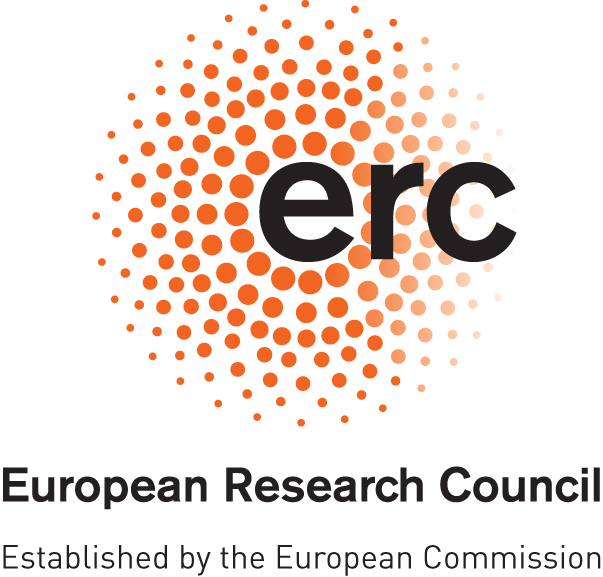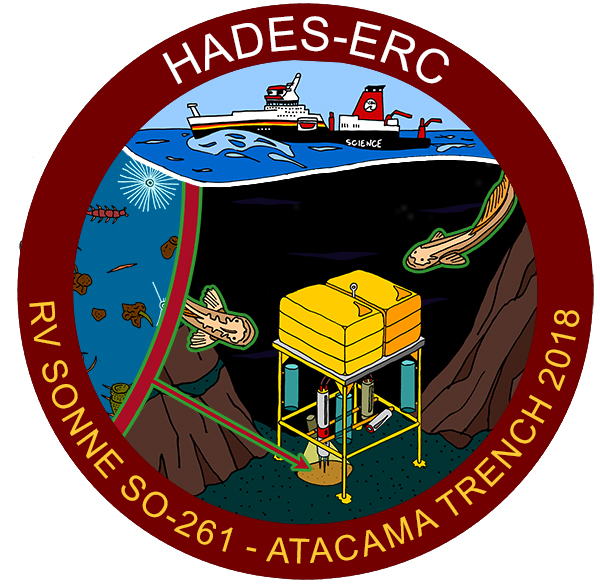- Press Office
- Blogs and More
- Ready for sailing - Blogpost 1 from RV SONNE, March 5, 2018
Ready for sailing - Blogpost 1 from RV SONNE, March 5, 2018
San Antonio, Chile
Friday, March 2nd, 2018
Research vessel SONNE is still moored in the port of San Antonio at Pier 6. At the beginning of March on the Pacific coast of Chile, summer temperatures around 25 degrees prevail. Captain Lutz Mallon and his crew await a total of 40 scientists from 17 different parts of the world, including Denmark, Italy, France, Germany, Austria, Spain, Scotland, England, Ireland, Nigeria, USA, Japan, Canada, China and Taiwan. Ten researchers come from Chile's Universidad de Concepcion and two more from Peru.
Before we leave port, there is a lot more to do. Boxes are being unpacked, equipment assembled and instruments checked. There is still time for final adjustments and repairs. For the newcomers on board, another challenge is finding their way on the 116-meter-long ship. The research vessel SONNE with ten decks and many laboratories can seem like a labyrinth. To make sure that no one gets lost, second officer Lars Hoffsommer gives a detailed security briefing. He also explains what special rules apply for human interaction during the cruise. Where many people get together in a relatively small space, it is important to take care of each other. For the next weeks, scientists and crew will work together to make this expedition a success.
Chief Scientist Frank Wenzhöfer from the Max Planck Institute in Bremen, Germany, coordinates between the ship's command and the researchers. He sums up the goal of this expedition: "We will sail to the Atacama Trench, a deep-sea trench that stretches over hundreds of nautical miles west off the shores of Chile and Peru to a depth of 8000 meters. Our goal is to find out which biological processes take place in the water column and in the sediment. For this, we have many specialists on board who brought along an array of scientific equipment to take measurements and samples. It is important to examine the extent to which deep-sea trenches act as a sink for carbon, and which processes influence the carbon footprint." The research will be coordinated with Ronnie Glud from the University of Southern Denmark in Odense, head of the HADES-ERC project.
Greetings from from the crew and the scientific party of So261,
Manfred Schlösser


Further information
More details about the project from the University of Southern Denmark.
More pictures related to the project.
Ronnie N Glud at Danmarks Radio (in Danish)
RV SONNE is a modern German research vessel sailing mainly in the Pacific Ocean.
More information about the ship here.

Specific questions addressed during this cruise are:
- What are the sedimentary processes providing food for the hadal community in the Atacama Trench?
- How do abundance, diversity and community structure of microorganisms, meio- and macrofauna in the Atacama Trench differ from those in less productive trenches and nearby abyssal and shelf sites?
- What are the general biogeochemical characteristics of the surface and deep sediment and water column in the eutrophic Atacama Trench?
- Which mineralization pathways are responsible for organic matter breakdown in the eutrophic Atacama Trench?
- How efficient are microbial communities operating at extreme hydrostatic pressures in mineralizing organic material as compared to their shallower counterparts? And to what extent do specialized, yet unknown extremophile microbial communities mediate these processes?
